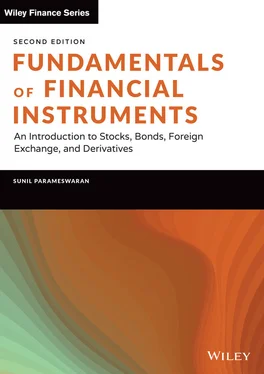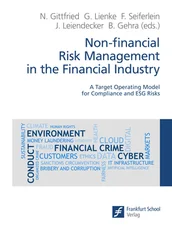Consider a financial surplus of $100,000 that is available with an individual. The most liquid way to keep it would be in the form of cash, but there will be a nil return. If the person were to park the surplus funds in a savings account, he would have to sacrifice by way of liquidity, but would get a return. If he were to move the funds to a time deposit, he would lose even more liquidity, but would earn a greater return as compared to a savings account.
Equity shares or shares of common stock of a company are financial claims issued by the firm, which confer ownership rights on the investors who are known as shareholders. All shareholders are part owners of the company that has issued the shares, and their stake in the firm is equal to the fraction of the total share capital of the firm to which they have subscribed. In general, all companies will have equity shareholders, for common stock represents the fundamental ownership interest in a corporation. Thus, a company must have at least one shareholder. Shareholders will periodically receive cash payments from the firm called dividends. In addition, they are exposed to profits and losses when they seek to dispose of their shares at a subsequent point in time. These profits/losses are referred to as capital gains and losses.
Equity shares represent a claim on the residual profits after all the creditors of the company have been paid. That is, a shareholder cannot demand a dividend as a matter of right. The creditors of a firm, including those who have extended loans to it, obviously enjoy priority from the standpoint of payments, and are therefore ranked higher in the pecking order.
Equity shares have no maturity date. Thus, they continue to be in existence as long as the firm itself continues to be in existence. Shareholders have voting rights and have a say in the election of the board of directors. If the firm were to declare bankruptcy, then the shareholders would be entitled to the residual value of the assets after the claims of all the other creditors have been settled. Thus, once again, the creditors enjoy primacy as compared to the shareholders.
The major difference between the shareholders of a company, as opposed to a sole proprietor or the partners in a partnership, is that they have limited liability. That is, no matter how serious the financial difficulties facing a company may be, neither it nor its creditors can make financial demands on the common shareholders. Thus, the maximum loss that a shareholder may sustain is limited to his investment in the business. Hence, the lowest possible share price is zero.
A debt instrument is a financial claim issued by a borrower to a lender of funds. Unlike equity shareholders, investors in debt securities are not conferred with ownership rights. These securities are merely IOUs (an acronym for “I Owe You”), which represent a promise to pay interest on the principal amount either at periodic intervals or at maturity, and to repay the principal itself at a prespecified maturity date.
Most debt instruments have a finite lifespan, that is, a stated maturity date, and hence differ from equity shares in this respect. Also, the interest payments that are promised to the lenders at the outset represent contractual obligations on the part of the borrower. This means that the borrower is required to meet these obligations irrespective of the performance of the firm in a given financial year. Quite obviously, it is also the case that in the event of an exceptional performance, the borrowing entity does not have to pay any more to the debt holders than what was promised at the outset. It is for this reason that debt securities are referred to as fixed income securities . The interest claims of debt holders have to be settled before any residual profits can be distributed by way of dividends to the shareholders. Also, in the event of bankruptcy or liquidation, the proceeds from the sale of assets of the firm must be used first to settle all outstanding interest and principal. Only the residual amount, if any, can be distributed among the shareholders.
While debt is important for a commercial corporation in both the public and private sectors of an economy, it is absolutely indispensable for central or federal, state, and local (municipalities) governments when they wish to finance their developmental activities. Although such entities can raise resources by way of taxes, and in the case of the federal government by printing money, they obviously cannot issue equity shares. For instance, a US citizen cannot become a part owner of the state of Illinois.
Debt instruments can be secured or unsecured. In the case of secured debt, the terms of the contract will specify the assets of the firm that have been pledged as security or collateral. In the event of the failure of the company, the security holders have a right over these assets. In the case of unsecured debt securities, the investors can only hope that the issuer will have the earnings and liquidity to redeem the promise made at the outset. In the United States, secured corporate debt securities are known as bonds, while unsecured debt securities issued by corporations are termed as debentures. In certain countries the terms bonds and debentures are used for both categories of debt securities. Also, the world over, government debt securities are known as bonds.
Debt instruments can be either negotiable or nonnegotiable. Negotiable securities are instruments which can be endorsed from one party to another, and hence can be bought and sold easily in the financial markets. A nonnegotiable instrument is one which cannot be transferred. Equity shares are obviously negotiable securities. While many debt securities are negotiable, certain loan-related transactions, such as loans made by commercial banks to business firms and savings bank accounts of individuals, are examples of assets that are not negotiable.
Debt securities are referred to by a variety of names such as bills , notes , bonds , debentures , etc. US Treasury securities are fully backed by the federal government, and consequently have no credit risk associated with them. The term credit risk refers to the risk that the issuer may default or fail to honor their commitment. Thus, the interest rate on Treasury securities is used as a benchmark for setting the rates of return on other, more risky securities. The US Treasury issues three categories of marketable debt instruments – T-bills, T-notes, and T-bonds. T-bills are discount securities also known as zero-coupon securities. That is, they are sold at a discount from their face value, and do not pay any interest. They have a maturity at the time of issue that is less than or equal to one year. T-notes and T-bonds are sold at face value and pay interest periodically. A T-note is akin to a T-bond but has a time to maturity between 1 and 10 years at the time of issue, whereas T-bonds have a life of more than 10 years.
Preferred stocks are a hybrid of debt and equity. They are similar to debt in the sense that holders of such securities are usually promised a fixed rate of return. However, such dividends are payable from the post-tax profits of the firm, as in the case of equity shares. On the other hand, interest payments to bondholders are made from pre-tax profits, and therefore constitute a deductible expense for tax purposes.
If a company were to refrain from paying the preferred dividends in a particular year, then the shareholders, unlike the bondholders, cannot take legal recourse as a matter of right. In practice, most preferred shares are cumulative in nature. This implies that any unpaid dividends in a financial year must be carried forward, and the accumulated dividends must first be paid before the company can contemplate the payment of dividends to equity shareholders.
Читать дальше












